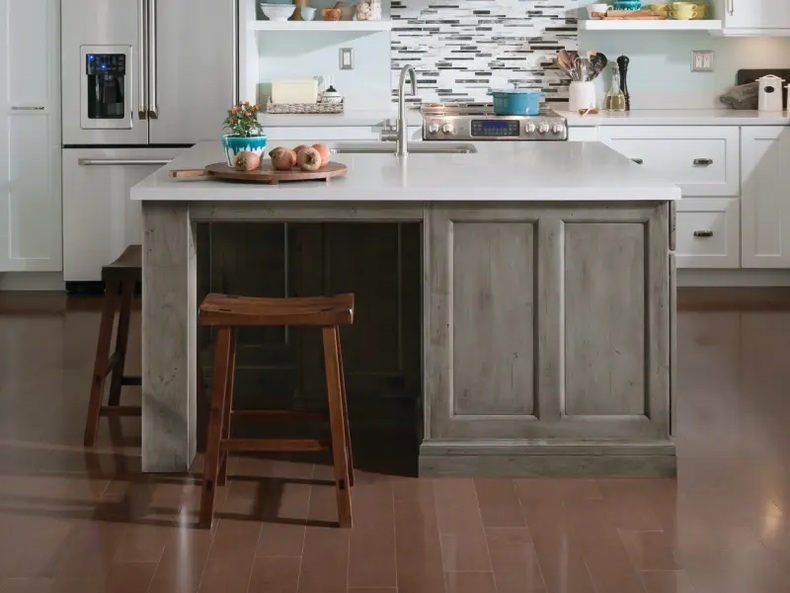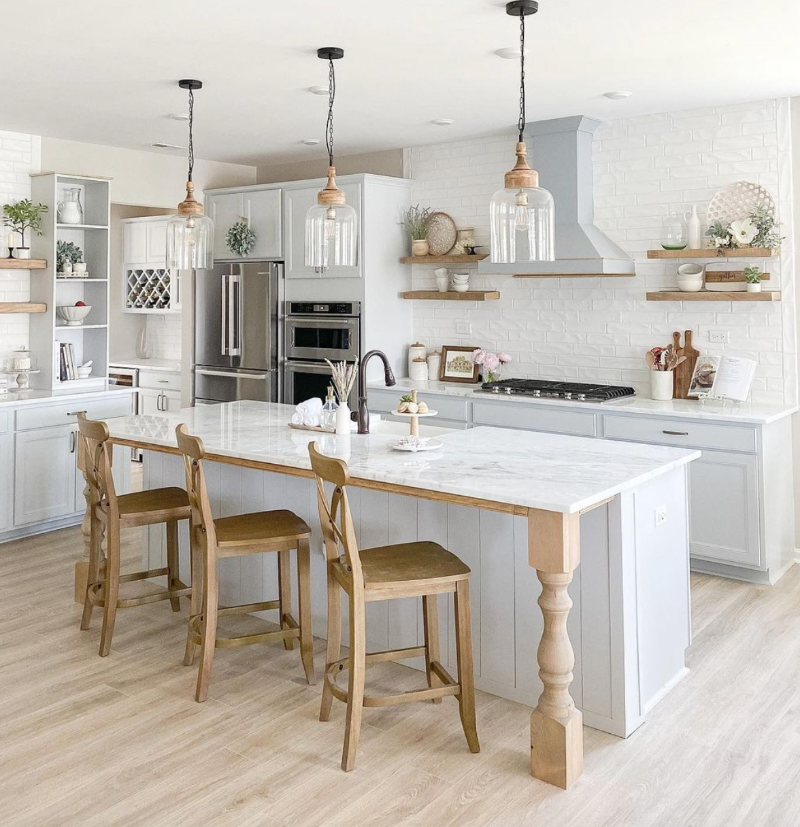Important Variables to Think About When Selecting Legs For Cooking Area Island
Selecting the proper legs for a kitchen island includes a careful assessment of several variables that can substantially affect both functionality and visual allure. As we explore these aspects, it comes to be clear that each decision can have significant effects for the overall kitchen area experience.
Product Options
When selecting legs for a kitchen area island, recognizing the numerous material choices is necessary for achieving both aesthetic charm and architectural honesty (Legs For Kitchen Island). The choice of material substantially affects not just the resilience of the island however additionally its total design and functionality
Metal legs, typically made from stainless steel or wrought iron, contribute a commercial and contemporary feel while making sure toughness and security. These products are resistant to wear and can sustain considerable weight, making them suitable for larger islands.
One more choice is crafted products, like MDF or plywood, which can be more affordable while still providing a series of coatings. They may not give the very same level of security as strong wood or steel. Legs For Kitchen Island. Finally, materials such as acrylic or glass can develop a modern look, though they might need additional assistance to guarantee stability.
Inevitably, the choice of product for kitchen area island legs should straighten with the preferred capability and the general theme of the kitchen area.
Design and Style

When thinking about design, the shape and surface of the legs are vital. Tapered legs can offer a sense of lightness and elegance, while thicker, more robust legs can share toughness and security. Furthermore, the surface-- be it painted, stained, or all-natural-- need to match the cabinets and counter top materials to develop a unified appearance.
Additionally, the style of the legs can also mirror individual taste. Customized or ornamental legs, such as those featuring complex makings or special geometric shapes, can act as prime focus, including personality and individuality to the kitchen. Ultimately, the best choice will certainly not only improve functionality yet likewise boost the visual allure, making the kitchen island a standout attribute of the home.
Elevation Considerations
Picking the suitable elevation for cooking area island legs is important, as it straight impacts both performance and convenience. The standard height for a cooking area island typically ranges from 36 to 42 inches, straightening with common countertop heights.

It is likewise necessary to account for individuals' choices and heights. Tailoring the height can ensure a comfy experience for all relative, making the kitchen island an extra pleasurable and functional area.
Weight Assistance
Making certain sufficient weight assistance for kitchen area island legs is important for both security and functionality. The kitchen area island often offers several functions, including cooking, dining, and additional storage space, requiring a robust support framework. When selecting legs, it is see vital to consider the general weight ability required based on the island's planned usage and the materials that will certainly be put on it.
The choice of product for the legs plays a substantial role in their weight-bearing abilities. Strong timber, metal, and heavy-duty compounds usually provide exceptional toughness contrasted to lighter materials. Additionally, the style of the legs-- whether they are right, tapered, or have a pedestal kind-- can influence their ability to distribute weight successfully throughout the framework.
Always consult the manufacturer's requirements pertaining to lots restrictions to make sure that the legs can sustain the intended weight without compromising safety and security. In recap, choosing kitchen area island legs with adequate weight assistance visit this website is crucial for developing a functional and secure cooking room.
Setup and Maintenance
Correct setup and maintenance of kitchen island legs are essential for making sure durability and stability. To start, it is important to follow the supplier's standards during installment. This typically involves safeguarding the legs to the island base making use of proper fasteners, making sure that the legs are level and straightened. Using a degree tool can aid stop tottering and improve the overall visual appeal of the kitchen area island.
As soon as installed, routine upkeep is necessary to protect the honesty and appearance of the legs - Legs For Kitchen Island. For wooden legs, routine cleansing with a wet towel and application of appropriate wood gloss can stop moisture damage and maintain their coating. Metal legs might call for a gentle cleansing remedy to remove grease and gunk, adhered to by a completely dry cloth to stop rust formation
Furthermore, examine the legs routinely for signs of wear or damage, such as splits or loosened joints. Tightening up screws or screws as needed can also lengthen the lifespan of the legs. By adhering to these setup and maintenance methods, house owners can make sure that their cooking area island stays strong and aesthetically appealing for many years to find.
Final Thought

Aesthetic coherence is critical in choosing the design and layout of legs for a kitchen island, as these elements significantly influence the general atmosphere of the area. Conical legs can supply a feeling of lightness and sophistication, while thicker, a lot more durable legs can communicate toughness and security.Selecting the proper elevation for kitchen area island legs is vital, as it straight affects both performance and convenience. In summary, choosing kitchen island legs with sufficient weight support is important for creating a useful and secure cooking area.
In final thought, selecting legs for a kitchen island demands mindful factor to consider of different elements, including product choices, style, height, weight special info assistance, and setup.